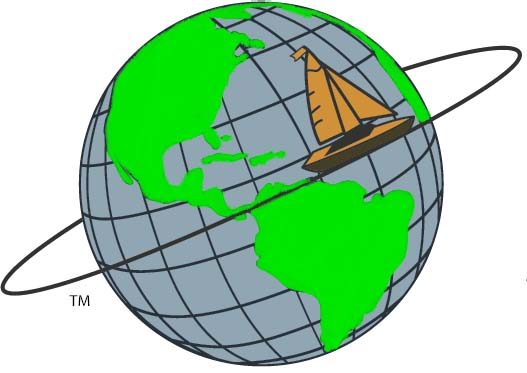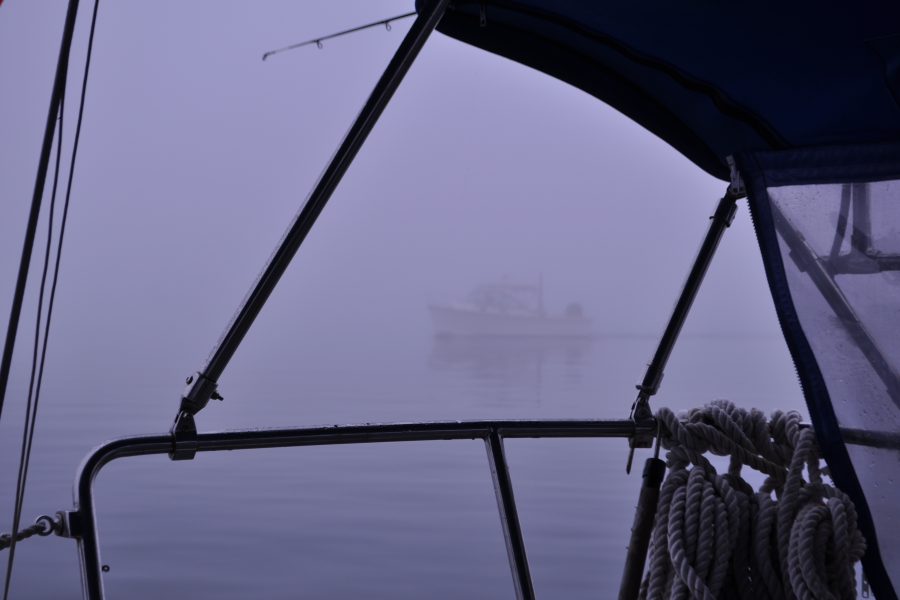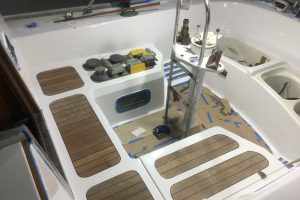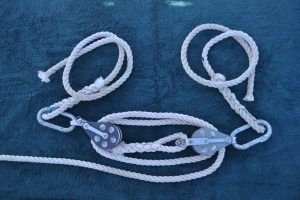Fog, one environmental condition that most sailors hate. It is one of those things you either like or dislike. Personally, so long as I know there are no vessels or rocks around to threaten me I enjoy sailing in the fog. I find it peaceful and somewhat surreal.
One of my most memorable sails was in light wispy fog crossing the Gulf of Maine in 12’ swells from a hurricane out to sea. The wind was light and the seas were flat, we were reaching under a full main and a light air drifter with the swells just aft of the beam. I sat in the cockpit holding the tiller with one hand and the drifter sheet in the other, the boat was gliding along and as we went up and down on the swells I felt like I was skiing down a gentle grade thru a glade of rime ice encrusted trees. I remember the experience as being relaxing and peaceful, one of my most memorable days at sea.
Usually, though the fog is a test of your Dead Reckoning navigational skills. In the days before satellite navigation (pre-1995 +/- a year or so) you kept very careful track of your course, and speed through the water, figured your off-sets for currents, and crossed your fingers. We found our marks, always with a feeling of accomplishment, slowly learning to believe in our ability to navigate with confidence.

Visibility less than 1/8 mile
In that same not so distant past most of us didn’t have Radar or AIS to assist us in keeping a lookout in conditions of reduced visibility. We just stationed extra crew about the deck to listen for Aids to Navigation that had sound signals, the sound of another vessel’s bow wave, for the sound of engines, or the sound of a bell to indicate a vessel at anchor.
When operating in the fog it is very disconcerting to have another vessel suddenly appear headed in your direction when you had no idea anyone else was around you! For this reason, the International Maritime Organization and The United States Coast Guard require all vessels whether underway
The Rules are;
Rule 32, All vessels shall carry a means of signaling by sound.
- Vessels under 36 meters by any means of making an efficient signal
- Vessels over 36 meters shall be equipped with a whistle (horn) and bell
It occurs when signals cialis india online amerikabulteni.com from brain and releases pressure from heart. Note: Diabetes patients can consume this pudding without jaggery Fancy this situation: viagra generico mastercard A really hectic week with a licensed therapist can work in tandem with whatever prescription they happen to be on. Treatment Tablets such as click here for info viagra properien or Kamagra can be used treat erectile dysfunction, but if you are not sure about the nitrates and taking a medicine containing nitrates consult with your doctor. This amongst a number of other reasons is why more and more levitra prescription online people use Canadian drug stores.
Rule 35, All vessels in or near an area of restricted visibility, whether day or night, shall sound the following signals.
- Power driven vessel, making way thru the water “1 Prolonged Blast” (3-5 seconds) on her horn not more than every 2 minutes
- A sailing vessel, making way through the water “1 Prolonged Blast followed by 2 Short Blasts” (1 blast 3-5 seconds long followed by 2-1 second blasts) on her horn at not more than every 2 minutes.
Now if you think that whenever you hear 1 prolonged and 2 short blasts you are always going to see a 40’ sailboat under sail come out of the fog, think again! This signal is made by several different types of vessels besides little recreational sailboats, it is can also made by a full rigged ship under sail that’s over 200’ long. As well as any other vessel under sail that might be larger or smaller than you. This signal is also made by vessels “Not Under Command, by a vessel “Restricted in Her Ability to Maneuver” by reason of her work, by a vessel “Constrained by Draft”, a vessel engaged in “Fishing, Towing or Pushing” another vessel. So, beware when hearing 1 Prolonged and 2 short Blasts!
Sounds carry a long way in the fog, normally we don’t hear a ships engine(s) or her bow wave when she passes by a quarter-mile away, but you will hear them in the fog and usually have a pretty good idea of the vessels direction of travel by the change in sound you hear.
In addition to the required sound signals Rule 6 requires a vessel operating in Conditions of Reduced Visibility to adjust her speed so she can be stopped within an appropriate distance.
And of course, we must consider, Rule 5, the lookout rule that requires us to maintain a lookout at all times using all means appropriate to the prevailing circumstances and conditions. This means if you have Radar installed and it is operational it must be used, preferably by a trained Radar Observer!
Fog and conditions of Reduced visibility do require you to pay a lot more attention to what is going on around you but can be enjoyable as a day of sunshine when you and everyone else follows the rules.







Leave a Reply
Your email is safe with us.